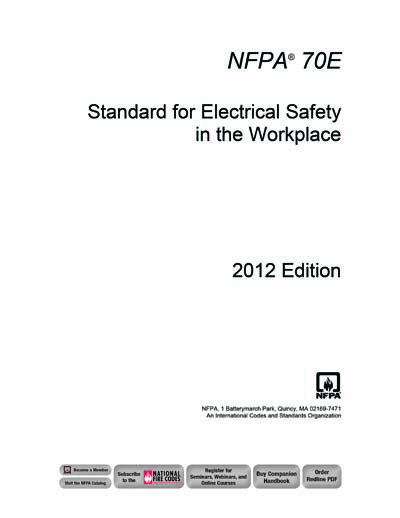Historical
NFPA 70E-2012
Standard for Electrical Safety in the Workplace, 2012 Edition
Lives depend on you! Protect your personnel from electrical hazards and meet the highest standard for electrical safety with the 2012 edition of NFPA 70E®.Workplace safety in the United States is evolving due to better awareness and implementation of NFPA 70E: Standard for Electrical Safety in the Workplace®. Yet hundreds of deaths and thousands of disabling injuries still occur each year due to shock, electrocution, arc flash, and arc blast -- and most could be prevented through NFPA 70E compliance. The 2012 NFPA 70E responds to the challenges, making it easier to ensure an electrically safe working area and comply with OSHA 1910 Subpart S and OSHA 1926 Subpart K.Get new ways to calculate risks and mitigate hazards.Originally developed at OSHA's request, NFPA 70E responds to new information about the effects of arc flash, arc blast, and direct current (dc) hazards, and recent developments in electrical design and Personal Protective Equipment (PPE).Coverage of direct current hazards is the first of its kind in the U.S.The rising demand for alternative energy systems such as photovoltaic and wind power present greater dc shock and arc flash hazard exposures to workers. To protect personnel, NFPA 70E includes a new shock protection boundary, hazard/risk table, and incident energy calculation for direct current systems. Revised Article 320 focuses on safe work practices for stationary batteries and battery rooms, such as those used by alternative energy systems.Make hazard/risk assessments and select proper PPE.Revised requirements delineate the essential difference between "risk assessment" and "hazard identification." Supporting information is in revised Annex F.Hazard/risk tables are expanded to include electrical system characteristics and arc-flash protection boundaries. The 2* designation has been eliminated to clarify that all H/R Category 2 tasks require full-head PPE.Change on "layering" for a combined arc-rating permits the use of arc-rated garments only.
Content Provider
National Fire Protection Association [nfpa]






